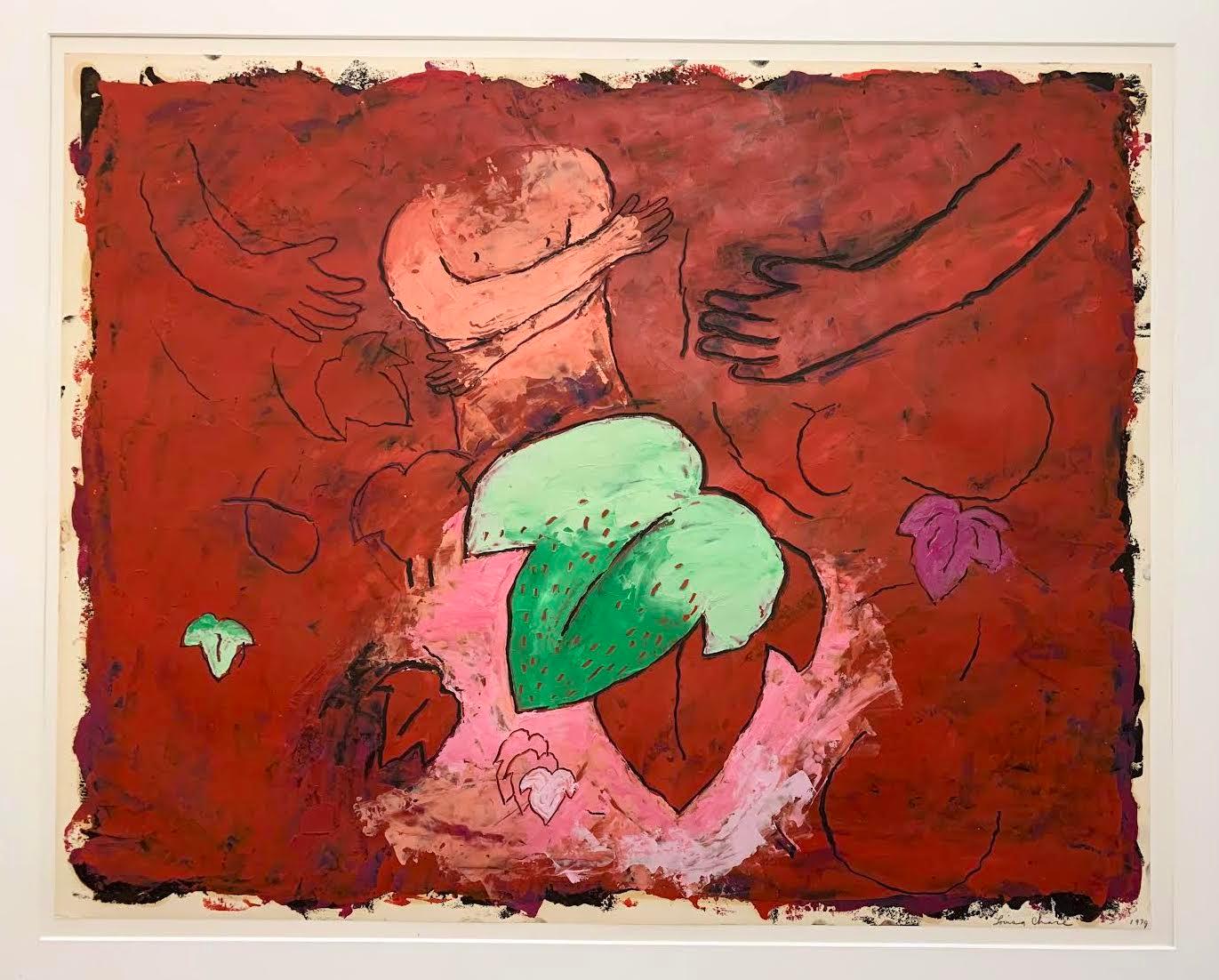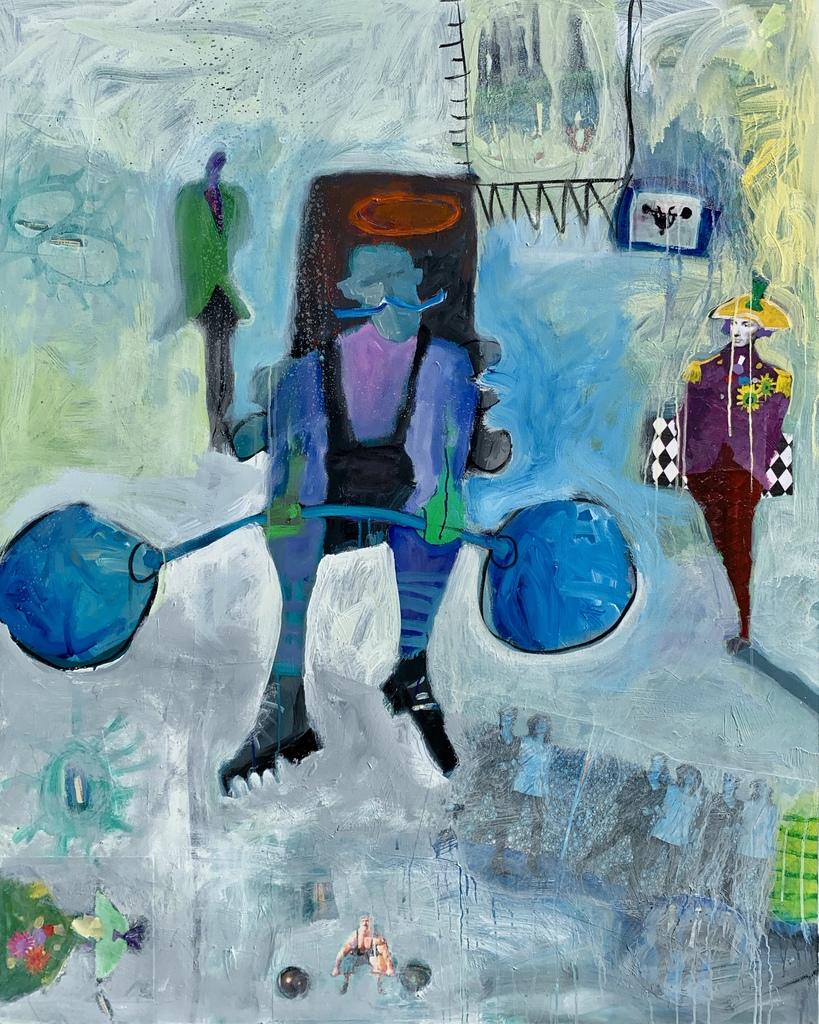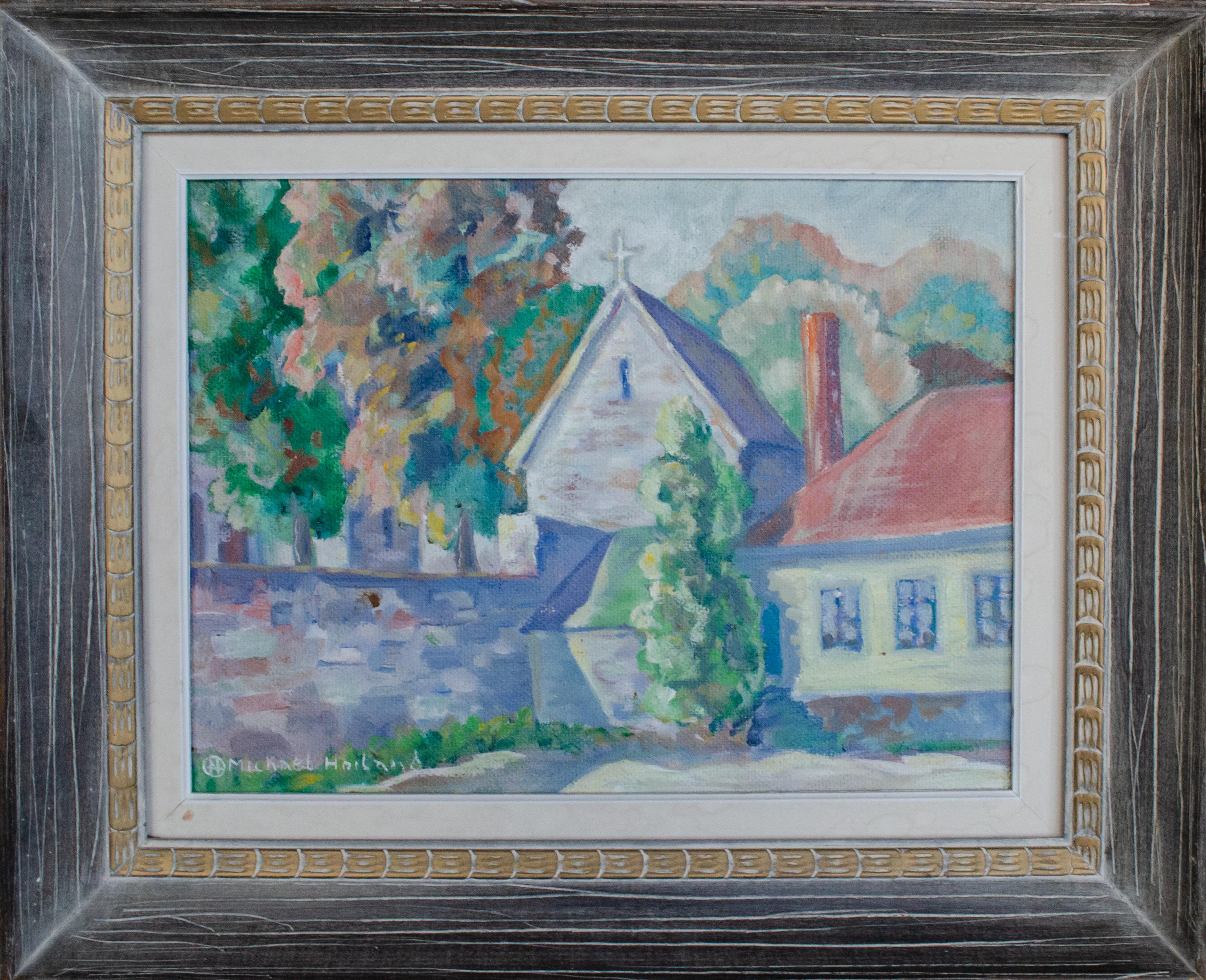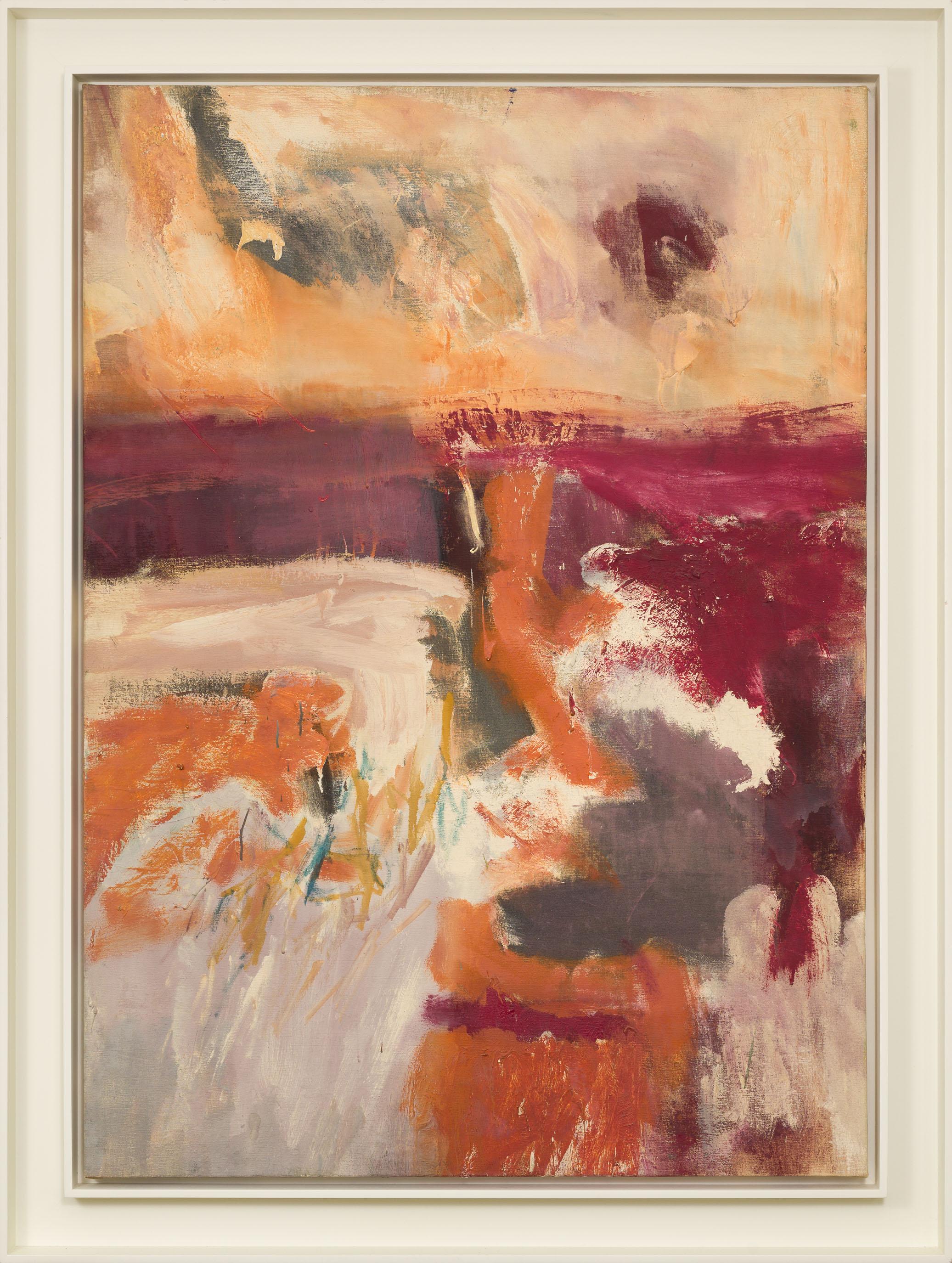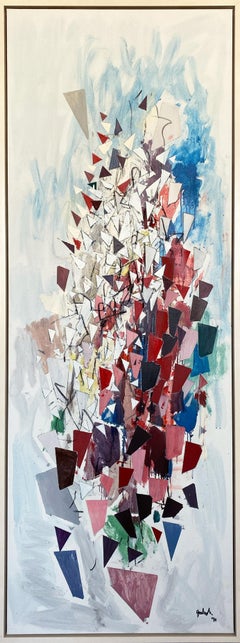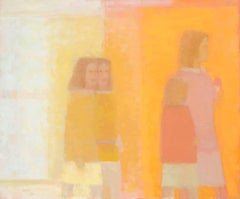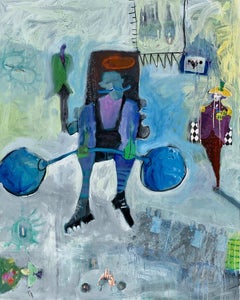Video Loading
Want more images or videos?
Request additional images or videos from the seller
1 of 16
Bernice CrossHalleluja, A story1943
1943
$9,500
£7,178.84
€8,289.80
CA$13,274.82
A$14,729.53
CHF 7,715.64
MX$180,623.54
NOK 98,140.32
SEK 92,640.28
DKK 61,822.20
Shipping
Retrieving quote...The 1stDibs Promise:
Authenticity Guarantee,
Money-Back Guarantee,
24-Hour Cancellation
About the Item
Initially read as archaic and simple, Halleluja is a complex celebratory spring painting full of color, imagination, and humor and combines many elements seen throughout her later career. A rural and urban scene, flowers dominate the foreground around which chickens and other birds peck as figures go about their business throughout the composition. The theme extends to the skies, not only in the birds in flight but a group of angels that rest on the building tops. Many of Cross’ paintings incorporate religious themes and were often whimsical, combining elements of folk and abstract art. Cross’ style remained her own, unaffected by the major themes in art through the 1940s and 50s. Its in an artist worked frame that she probably toned to go with the piece and it has an exhibition plate on the front. the painting measures 34 x 28 inches so the listed size is the framed size.
- Creator:Bernice Cross (1912 - 1996, American)
- Creation Year:1943
- Dimensions:Height: 39 in (99.06 cm)Width: 32.5 in (82.55 cm)Depth: 3 in (7.62 cm)
- Medium:
- Movement & Style:
- Period:
- Condition:Canvas is fine. Frame has cracks in corners and artist made patina/coloring and it is weathered a bit. Frame could be kept for original feel or changed.
- Gallery Location:Greenwich, CT
- Reference Number:1stDibs: LU141329848452
About the Seller
5.0
Recognized Seller
These prestigious sellers are industry leaders and represent the highest echelon for item quality and design.
Gold Seller
Premium sellers maintaining a 4.3+ rating and 24-hour response times
Established in 1857
1stDibs seller since 2020
43 sales on 1stDibs
- ShippingRetrieving quote...Shipping from: Stamford, CT
- Return Policy
Authenticity Guarantee
In the unlikely event there’s an issue with an item’s authenticity, contact us within 1 year for a full refund. DetailsMoney-Back Guarantee
If your item is not as described, is damaged in transit, or does not arrive, contact us within 7 days for a full refund. Details24-Hour Cancellation
You have a 24-hour grace period in which to reconsider your purchase, with no questions asked.Vetted Professional Sellers
Our world-class sellers must adhere to strict standards for service and quality, maintaining the integrity of our listings.Price-Match Guarantee
If you find that a seller listed the same item for a lower price elsewhere, we’ll match it.Trusted Global Delivery
Our best-in-class carrier network provides specialized shipping options worldwide, including custom delivery.More From This Seller
View AllBefore the Party Abstract
Located in Greenwich, CT
Avant la Fête or “Before the Party” is a superb and vibrant work by Wemaere who is a well recognized European abstractionist in the tradition of the CoBrA move...
Category
1990s Abstract Abstract Paintings
Materials
Canvas, Oil, Acrylic
Before the Party abstraction
Located in Greenwich, CT
Before the Party is an intriguing abstraction that speaks to fantasy and imagination. Wemaere is known as part of the CoBrA group in Europe and his works are sought after and distin...
Category
1990s Abstract Abstract Paintings
Materials
Canvas, Oil, Acrylic
City Abstraction, mid modern abstract oil painting Circa 1950’s
By Donald Roy Purdy
Located in Greenwich, CT
In the 1950’s Donald Purdy embraced an abstract style of painting which was pervasive at the time. This painting is a perfect compliment to a room with mide modern furniture. In Ci...
Category
Mid-20th Century Abstract Expressionist Figurative Paintings
Materials
Canvas, Oil
Soaring I , abstract
By Robert Arthur Goodnough
Located in Greenwich, CT
An amazing and graceful panel that has an elevating sense of movement and nature as described by its title "Soaring". Intricate taping off of triangles in this work in varying sizes...
Category
1990s Abstract Abstract Paintings
Materials
Canvas, Oil
Sophie
By André Cottavoz
Located in Greenwich, CT
Sophie is an expressive and highly individualistic Post Impressionist work reminiscent of Chaim Soutine. Cottavoz isn known and celebrated for using incredibly thick paint that is a...
Category
1960s Abstract Figurative Paintings
Materials
Canvas, Oil
Abstract Post War Still Life
Located in Greenwich, CT
An exciting, rare and impressive painting that is of a great size for a sofa or long wall. Very hard to find paintings with this format. It is of an early and important historical ...
Category
1940s Abstract Expressionist Abstract Paintings
Materials
Canvas, Oil
You May Also Like
Untitled
By Louisa Chase
Located in New York, NY
Louisa Chase was born in Panama City, Panama. Seven years later, her family moved to Lancaster, Pennsylvania. She studied painting and sculpture at Syracuse University and at the Yal...
Category
20th Century Contemporary Paintings
Materials
Paper, Wax Crayon
$20,000 Sale Price
42% Off
School
By John Hartell
Located in Dallas, TX
Valley House Gallery is honored to present a selection of paintings from the estate of American artist, John Hartell (1902-1995). John Hartell taught two disciplines at Cornell University in Ithaca, New York: freshman architecture and graduate painting. He was a much-loved professor there from 1930 until his retirement in 1967; one of his most illustrious students is the architect Richard Meier. As an artist, Hartell's first solo exhibition was in 1937 at Kleeman Gallery in New York. He exhibited at Kraushaar Galleries in New York for four decades, beginning in 1943. The Hartell Gallery at Cornell University, under the Sibley Dome, is named for him. In describing John Hartell, the artist Michael Boyd...
Category
Late 20th Century American Modern Paintings
Materials
Canvas, Oil
$5,800
In Favor of Happiness
By Robin Walker
Located in Santa Monica, CA
Acrylic, mixed media collage on canvas
Category
2010s Abstract Abstract Paintings
Materials
Mixed Media, Acrylic
Original Painting by Norwegian-American Artist Michael Hoiland
Located in New York, NY
Michael Hoiland (Norwegian-American, 1901-1994)
Untitled (Church, Possibly Chicago), 20th century
Oil on board
13 1/2 x 17 1/2 in.
Framed: 18 3/4 x 21 3/4 in.
Signed lower left: Mich...
Category
20th Century Modern Figurative Paintings
Materials
Oil, Board
Gertrude Barrer Oil on Board
Located in San Francisco, CA
Gertrude Barrer: 1921-1992. Well listed American artist with auction records over $9500. She studied a the Arts Student League in the 1940s. More rece...
Category
20th Century American Modern Paintings
Materials
Oil
Untitled
Located in Austin, TX
Waterline Fine Art, Austin, TX is pleased to present the following work:
Oil on canvas. Signed verso. Some scratched out, illegible writing in paint and graphite verso, which may ha...
Category
1960s Abstract Expressionist Abstract Paintings
Materials
Canvas, Oil
